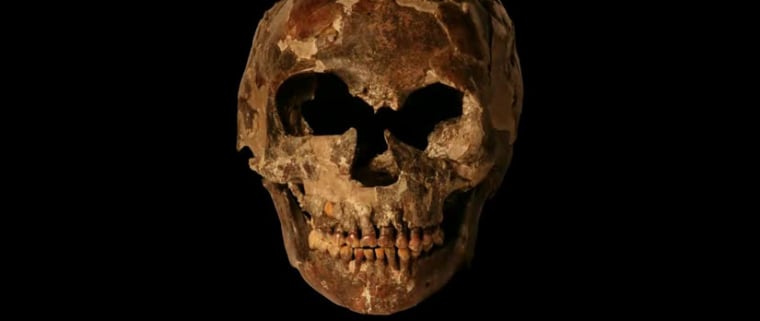Neanderthals reached full maturity faster than humans do today, suggests a new examination of teeth from 11 Neanderthal and early human fossils. The findings, detailed in the latest Proceedings of the National Academy of Sciences, portray Neanderthals as a live fast and die young species.
Our characteristically slow development and long childhood therefore appear to be recent and unique to Homo sapiens. These traits may have given our early modern human ancestors an evolutionary advantage over Neanderthals.
"I think Neanderthals retain a more primitive developmental condition that seems to be shared with earlier fossil humans," lead author Tanya Smith told Discovery News. "We know from other studies of dental and cranial development that australopithecenes (early hominids from Africa) and Homo erectus did not show long or slow developmental periods like our own."
Smith, an assistant professor in the Department of Human Evolutionary Biology at Harvard University, and her colleagues made the determination after using a high-tech method called synchrotron micro-computed tomography to virtually count growth lines in teeth. These lines, like rings in trees, reveal yearly growth progress.
"Even more impressive is the fact that our first molars contain a tiny 'birth certificate,' and finding this birth line allows scientists to calculate exactly how old a juvenile was when it died," she said. In one instance, a juvenile Neanderthal was determined to be only three years old when it died, as opposed to age four or five as had previously been suspected.
She and her team also discovered that anatomically modern human groups that left Africa some 100,000 years ago experienced an elongation of their childhood, which has been with our species ever since. All other primates have shorter gestation, faster childhood maturation, younger age at first reproduction, and a shorter overall lifespan.
While delaying reproduction poses a risk that individuals may not live long enough to reproduce, it could facilitate learning, social development and complex cognition. Neanderthals are known to have large brains, as well as large bodies. Without much time for learning, however, those big brains might not have been much of a match for our own impressively large-brained species.
Smith said some researchers also suggest that slowing down childhood "may have allowed for conservation of energy, and this may have accompanied decreased mortality rates and/or more favorable environmental conditions."
Even today, traditional human populations show variation in rates of growth and development, likely due to selective pressures and environmental constraints. These probably affected the different hominid groups as they evolved in either Africa or, in the case of Neanderthals, in Europe and other northern regions.
"There are more than 100 known Neanderthal fossil juveniles," Smith noted, "a relatively large number when compared with all known Neanderthal individuals, which may imply that childhood mortality was high."
The findings, part of a five-year project exploring the development of Neanderthals, add to the debate on what differences existed between these archaic humans and our own species, as well as what happened to the Neanderthals.
Debbie Guatelli-Steinberg, an associate professor of anthropology at Ohio State, and her team previously concluded that Neanderthal teeth grew no faster those of modern humans. But she and her colleagues left open whether a Neanderthal childhood was equal, at least in length, to that of our species.
Erik Trinkaus, a Neanderthal expert who is a professor of physical anthropology at Washington University in St. Louis, believes that the modern humans who came from Africa had no real edge over Neanderthals when they first spread across Eurasia.
At this time in our history, "archaic humans remained across the more northern areas, and even displaced the modern humans in Southwest Asia for an additional 50,000 to 70,000 years," Trinkaus told Discovery News. "It argues for very little adaptive advantage on the part of these modern humans."
He and some other anthropologists think Neanderthals and modern humans mated, so the Neanderthals may have simply been absorbed into our own species over time.
Smith and her team, however, hint that forthcoming new studies reveal genetic and brain differences that existed between Neanderthals and members of our species, further heating up the scientific debate.
